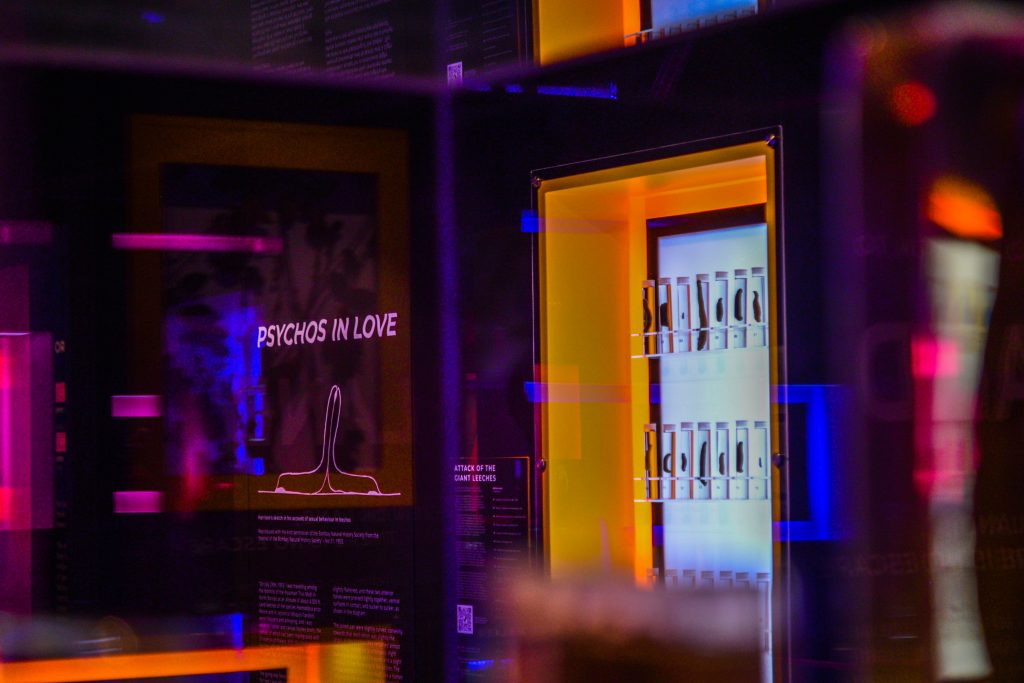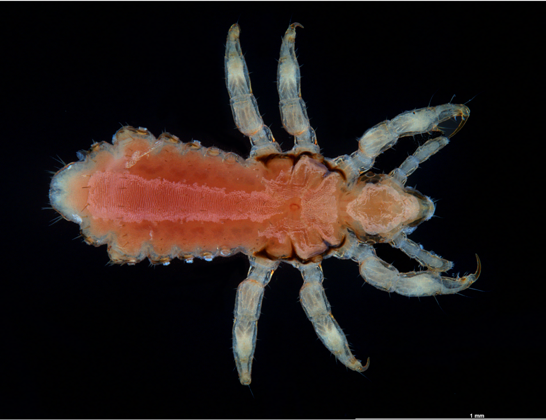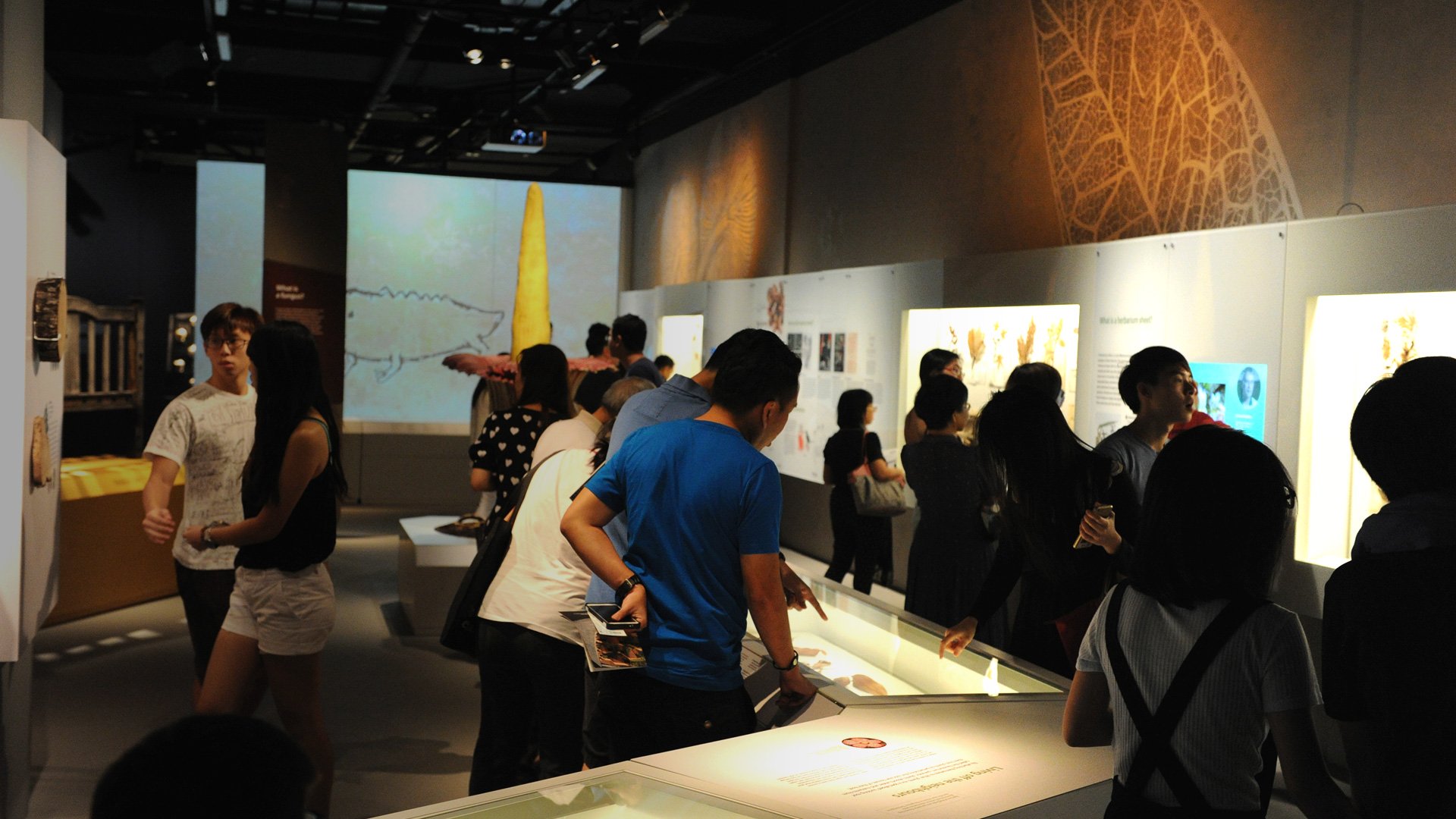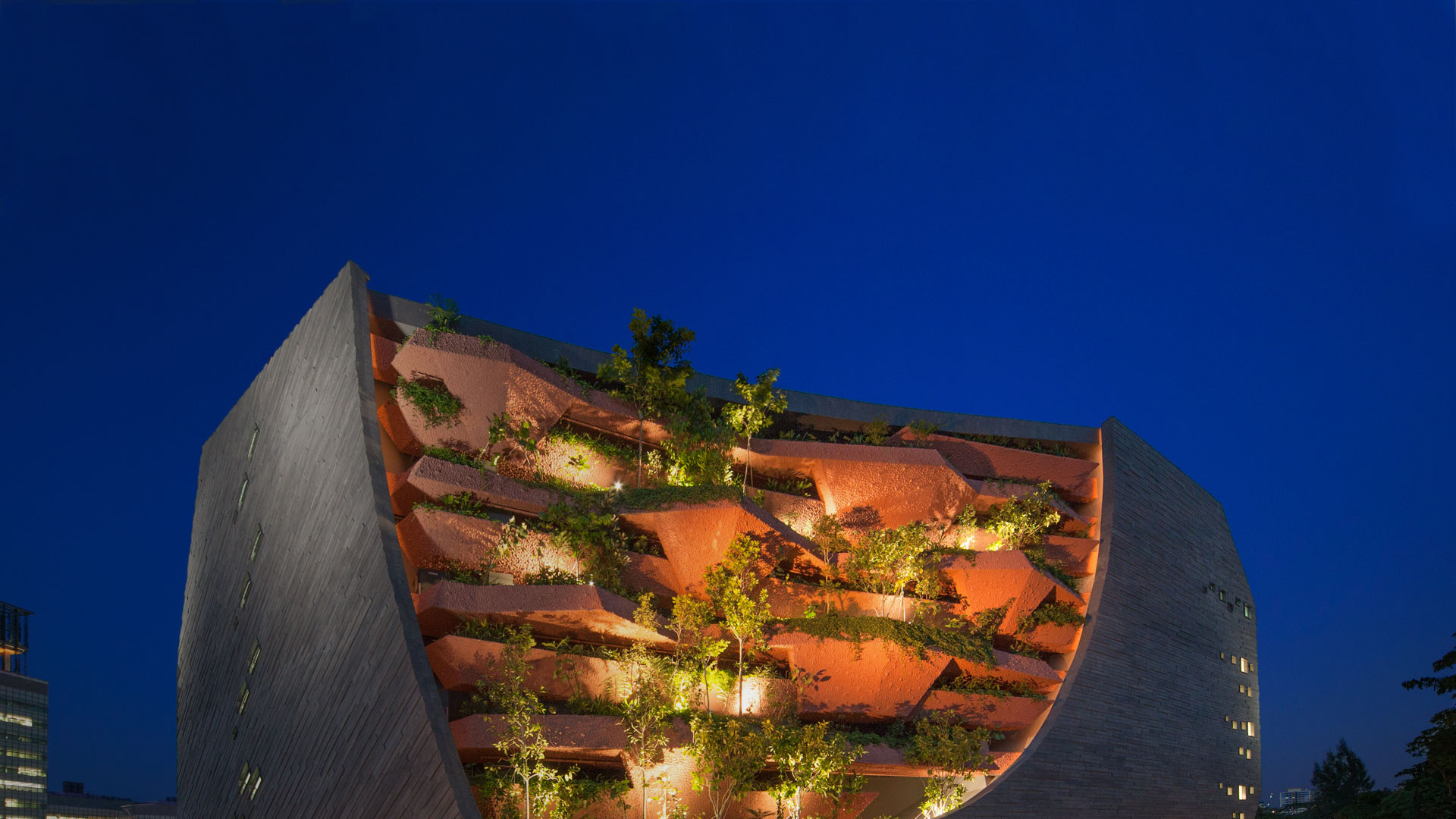Body Snatchers

Parasites, Body Snatchers and Zombifying Infesters—enough to strike terror at the mere mention and a reputation that is not entirely undeserved. To explore the life history of parasites is to sometimes delve into Nature’s macabre house of horrors—an insidious world of deception, mindless consumption, and incessant duplication. Complex in their being, worming in and out of intermediate and final hosts, their lives are inextricably linked to ours. But are they all bad? In some ways, parasites may actually be doing the planet an invaluable service. This exhibition, whilst an exploration of the horrifying world of parasites, brings hope that as you get to know them better you may actually begin to like them.
Highlights of the Exhibition
The exhibition is split into three ecosystems of water, land, and air—each ‘headed’ with the title of a mid-20th century horror film. Prepare to be greeted with an aura of unease and curiosity as you step into a techy soundscape with neon glows and morphing projections to intrigue your senses!

Body Snatchers exhibition gallery with neon lights, featuring our wall of leeches! Photo credit: Iffah Iesa, 2021
Some of our common and lesser-known parasites that are showcased, include:
Tapeworms, Taenia sp.
Taking the lead in the gross factor is the widely-known tapeworm which is a ribbon-like worm that lives in the intestines of human beings. Like it or not, they have an intimate relationship with us where they need an intermediate host before worming their way into human beings. They can grow up to 10 metres long and can typically infect people who consume undercooked meat from infected animals.

Gallery impression of the tapeworms. Photo credit: Iffah Iesa, 2021
Cymothoid Crustaceans
Known to be the world’s first parasite to replace an organ, this tongue-eating crustacean attaches to the gills of a fish and moves to the mouth where it severs the fish’s tongue and replaces it. While some species feed on blood and others feed on fish mucus, interestingly, these parasitic crustaceans do not kill their host. Not harmful to humans, they can surprisingly be found in fish available at your typical wet market!

Gallery impression of the cymothoid crustaceans. Photo credit: Iffah Iesa, 2021
Head Louse, Pediculus humanus capitis
Like unwanted ‘pets’ which are hard to shake off, the head louse is often found nestled on the human scalp, eyebrows or eyelashes, as it feeds on human blood every few hours. While they do not spread diseases, they can cause itching and other mild symptoms.

A close up image of the head louse Pediculus humanus capitis. Photo credit: Maimon Hussin, 2021
The exhibition also showcases works of some our local artists, featuring:
- Ang Xue Ning’s mixed medium, ‘Greater Occupant’

Gallery impression of Ang Xue Ning’s art installation ‘Greater Occupant’. Photo credit: Cherry Goh, 2021
- Goh Jia Jie’s digital 2D animations, ‘We Live In The Same World With Different Colours On Mind’
- Juria Toramae’s single-channel loop with AI of ‘Feathered Islands’



